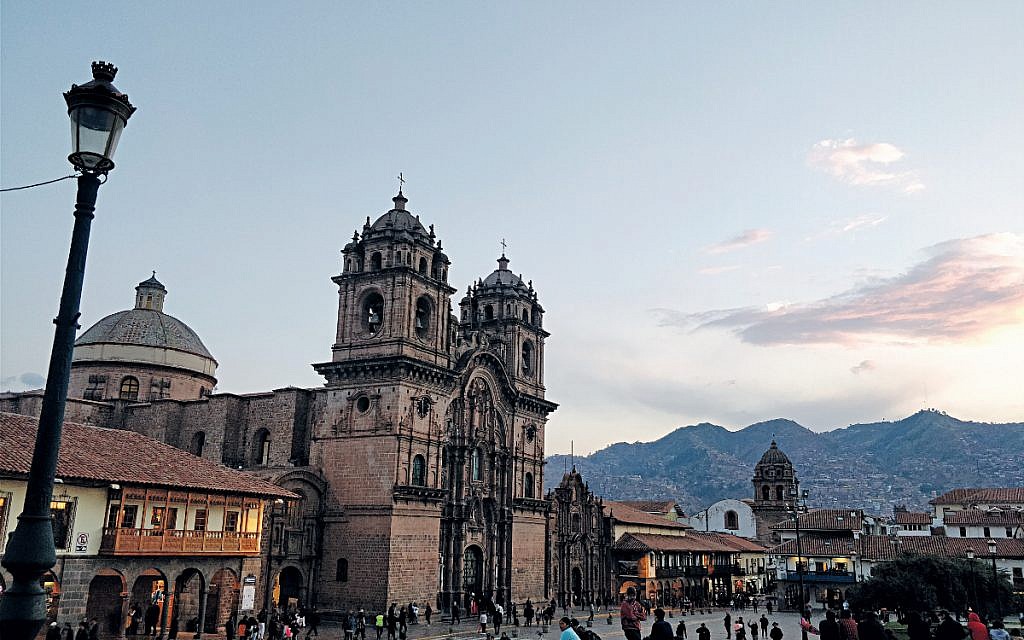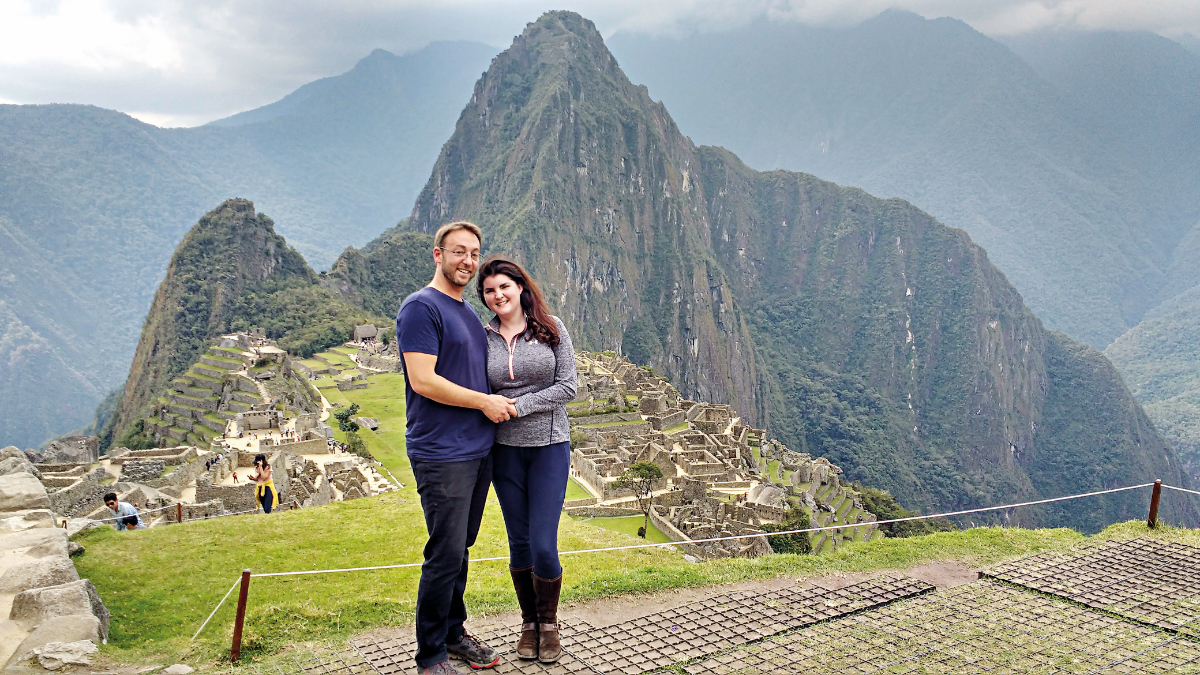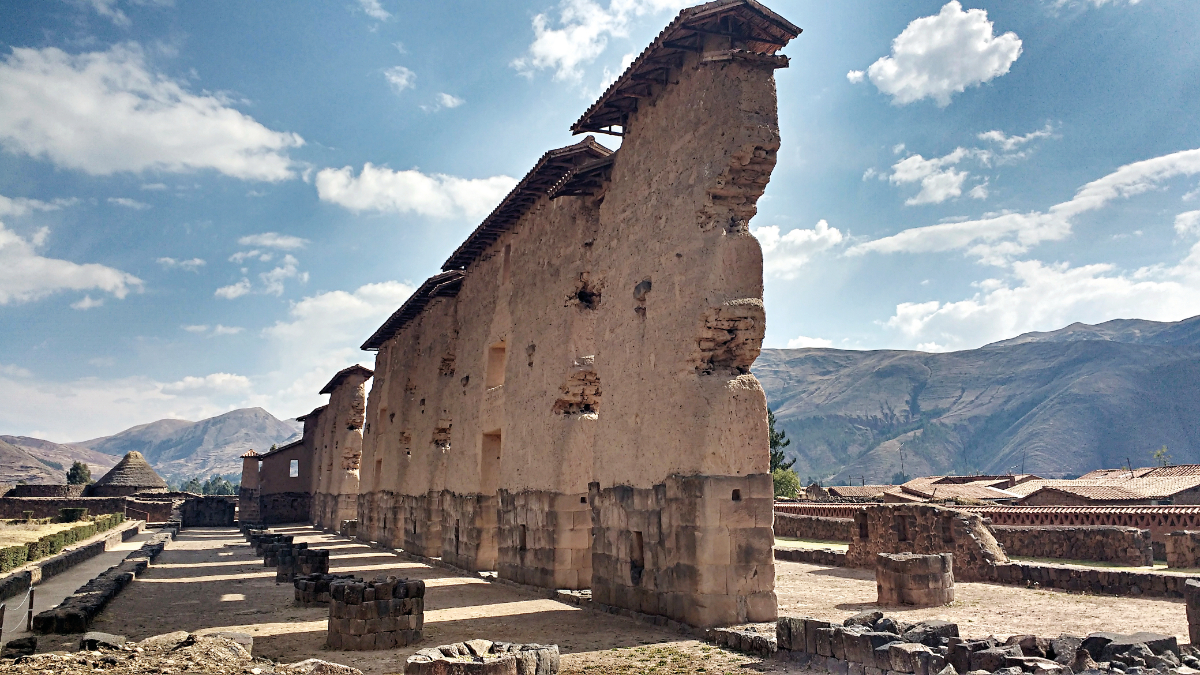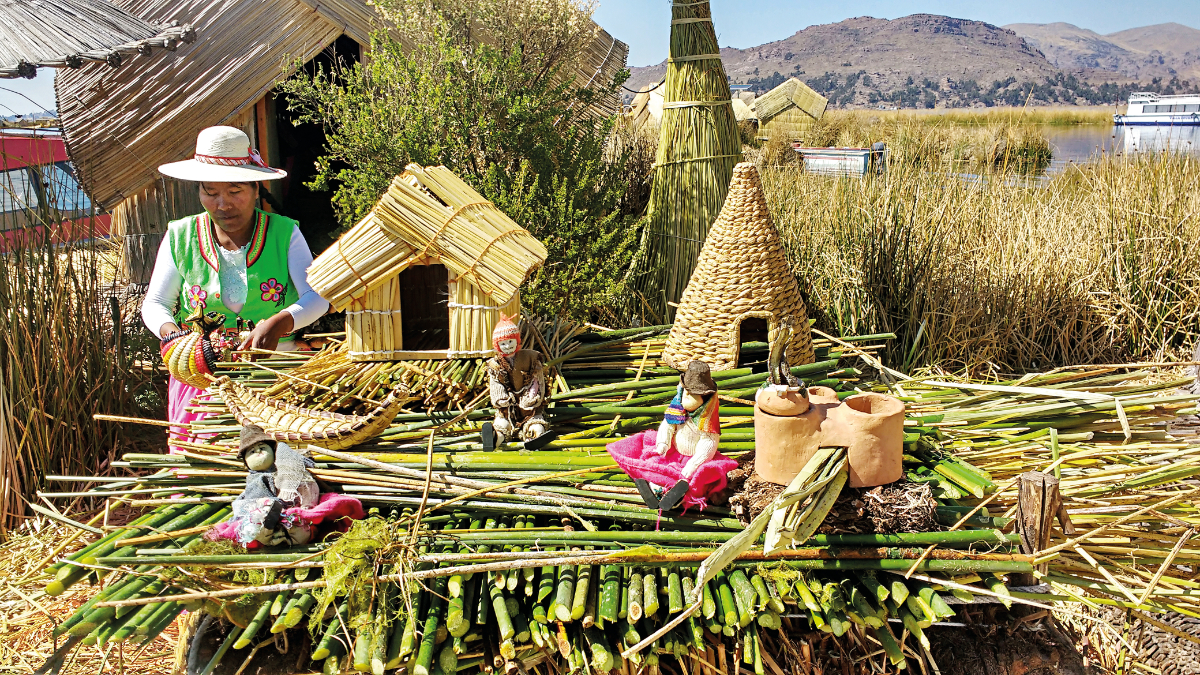High life in the Andes!
In the footsteps of Incas and conquistadors, Stephen Oryszcuk heads for Peru and finds some startling and exotic sights
The Israeli flag isn’t the first you’d expect to see as you drive away from Lima airport in Peru’s capital, but there it was – the Star of David fluttering alongside the red and white of this South American superstar. Sure enough, the two countries like each other. Embassies, trade, defence deals, intelligence links, even plans to use Israeli technology in Peru’s deserts – it’s all here. Add a history of Jews settling since the rubber boom, of synagogues respected and of hundreds of post-IDF Israeli backpackers limbering unencumbered through the scenery, and you have the makings of a beautiful friendship.
That was reason enough for us to limber over, in the comfort of British Airways, to rest our heads in Lima’s top hotel, the Belmond Miraflores Park, in the plush diplomatic quarter.
The ocean views from our ninth floor room were almost as good as the three-foot-deep mattress enjoyed after our first pisco sour (the national drink) expertly crafted in the lobby bar. The more I stay with this hotel chain, the more I think there are few to beat it.
Get The Jewish News Daily Edition by email and never miss our top stories Free Sign Up
The wonders of Peru are further afield, however, so we left the next morning to fly to the Inca capital Cusco, a spellbinding city in the Andes, standing proud and undefeated at 11,200 feet (3,400 metres). Ascending to such heights so suddenly can give you altitude sickness, and the advice is to drink lots of water and eat light. “Eat light?” I said, asunder. “But this is a Jewish travel review!”
We gave Cusco two nights, but wished we’d stayed longer. We chose well with the Belmond Monasterio, next to the cathedral, and were lucky to go at the weekend, venturing out into the main square on a Saturday evening. With light fading on this UNESCO World Heritage Site, we were met by two musical processions of colour and sound, drums and dancing and swirling bright costumes worn by those with genuine love-life smiles as they marched along.
In another corner of the square bounded by buildings with Inca foundations, including a 23-sided stone, was a hypnotic spiritual candlelit gathering, its participants singing so soul-touchingly it brought Mrs O to tears, despite her not having a clue what they were singing about. Such is the magic of Cusco. Within an hour, it had easily become one of our favourite cities.
And yes, there are Jewish links to the Incas. The Bnei Moshe (children of Moses, also known as ‘Inca Jews’)is a community of several hundred converts founded in 1966 and mostly descended from Spanish-Jewish ancestry. News to me too!
We woke at Belmond Monasterio, with its resplendent 300-year-old Andean white cedar (far from the oldest thing here) manspreading the central courtyard, to partake of the world’s best breakfast. Luminescent lime-green humming birds whispered sweet nothings to pink fuschia next to us as we sipped coca tea, which we were told is both good for altitude and highly illegal outside Peru.
In the evening, we were serenaded by opera singers over a pitch-perfect evening meal before retiring to our oxygen-enriched room. If this isn’t living, I don’t know what is, and I urge you here and now to give Cusco more time than we did so you can sample some of South America’s best restaurants on your doorstep.
So to the Urubamba Valley, and the riverside Belmond Rio Sagrado, with an outdoor hot-tub overlooking the Andes. This hotel lets guests feed the llamas (Mrs O was first in the queue) and serves – among other things –roast guinea pig in the restaurant.
From here we struck out to Machu Picchu. Again, words fail me, a rare occurrence after six years in the Jewish community. Perhaps I could just describe it in exclamation marks followed by a ‘wilting’ emoji.
Some advice: don’t spend a fortune on a night at Belmond Sanctuary Lodge, uniquely placed on the doorstep of this 15th-century citadel. Not because it’s not a good hotel – it’s great – but because it sells itself on giving guests the chance to get up early and beat the crowds. Since everyone else does that, the 6am risers only ever see Machu Picchu through a crowd. Be smart: go late, and have it to yourself.
We took the Belmond Hiram Bingham, an old-school charmer on rails that takes all morning to whisk you serenely up to the kick-off point that hikers reach only after six days. Imagine a 1920s drawing room with Peruvian butlers and passing scenery worthy of an Attenborough documentary and you’re almost there. Perfectly cooked beef fillet and glorious red wine for elevenses? Why not?
We liked the Belmond train experience so much we took the similarly luxurious Belmond Andean Explorer on its fantasy expedition over the mountains to Lake Titicaca.
At 12,500 feet, this is the world’s highest navigable lake and home to the fascinating and hospitable Uros people, who live on floating islands made of reeds. Seeing the lake at sunrise beside a fire is but one of many highlights.
By the time we reached Colca Canyon, one of the world’s deepest, via a mountain road touching altitudes of 15,000 feet, we were ready to relax at Belmond Las Casitas, a selection of high-end villas overlooking a valley. Thankfully, this hotel specialises in R&R, with cookery classes, cocktail-making, horse-riding (Mrs O was ‘in the moment’, I was ‘in the saddle’ getting bounced around) and Andean condors, majestic creatures with three-metre wingspans that glide effortlessly over your mobile phone camera.
It was a wonderful end to a must-do holiday. The IDF backpackers have the right idea. Long may the flag fly.
Stephen and Mrs O were guests of Belmond Hotels, formerly Orient-Express Hotels. Details of the group’s properties can be found at www.belmond.com

Thank you for helping to make Jewish News the leading source of news and opinion for the UK Jewish community. Today we're asking for your invaluable help to continue putting our community first in everything we do.
For as little as £5 a month you can help sustain the vital work we do in celebrating and standing up for Jewish life in Britain.
Jewish News holds our community together and keeps us connected. Like a synagogue, it’s where people turn to feel part of something bigger. It also proudly shows the rest of Britain the vibrancy and rich culture of modern Jewish life.
You can make a quick and easy one-off or monthly contribution of £5, £10, £20 or any other sum you’re comfortable with.
100% of your donation will help us continue celebrating our community, in all its dynamic diversity...
Engaging
Being a community platform means so much more than producing a newspaper and website. One of our proudest roles is media partnering with our invaluable charities to amplify the outstanding work they do to help us all.
Celebrating
There’s no shortage of oys in the world but Jewish News takes every opportunity to celebrate the joys too, through projects like Night of Heroes, 40 Under 40 and other compelling countdowns that make the community kvell with pride.
Pioneering
In the first collaboration between media outlets from different faiths, Jewish News worked with British Muslim TV and Church Times to produce a list of young activists leading the way on interfaith understanding.
Campaigning
Royal Mail issued a stamp honouring Holocaust hero Sir Nicholas Winton after a Jewish News campaign attracted more than 100,000 backers. Jewish Newsalso produces special editions of the paper highlighting pressing issues including mental health and Holocaust remembrance.
Easy access
In an age when news is readily accessible, Jewish News provides high-quality content free online and offline, removing any financial barriers to connecting people.
Voice of our community to wider society
The Jewish News team regularly appears on TV, radio and on the pages of the national press to comment on stories about the Jewish community. Easy access to the paper on the streets of London also means Jewish News provides an invaluable window into the community for the country at large.
We hope you agree all this is worth preserving.
-
By Brigit Grant
-
By Laurent Vaughan - Senior Associate (Bishop & Sewell Solicitors)
-
By Laurent Vaughan - Senior Associate (Bishop & Sewell Solicitors)
-
By Laurent Vaughan - Senior Associate (Bishop & Sewell Solicitors)
-
By Laurent Vaughan - Senior Associate (Bishop & Sewell Solicitors)

























